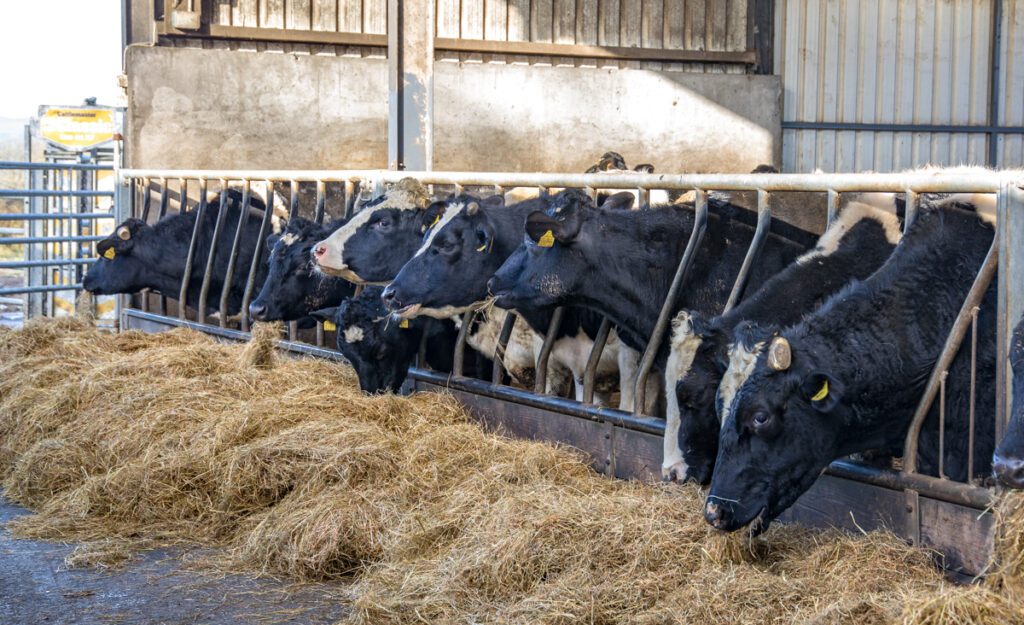There will be breakthroughs with methane-reducing feed additives but it will take time, according to Dr. Laurence Shalloo of Teagasc.
The head of the Animal and Grassland Research and Innovation programme said that there was “lots of excitement” around the development of feed additives as a way to reduce emissions.
However, in his address to the Irish Farmers’ Association (IFA) Farming and Climate Summit in Limerick on Tuesday (January 10), Shalloo sounded a note of caution.
“Most of the additives make lots of claims, but when we test them they do very little. But there are some that are delivering and are really delivering significant solutions.
“For me, what must an additive have? It must have consistent methane reduction.
“It must have a mechanism of delivery. This may surprise you about some of the groups that have additives developed, they haven’t thought about how they are going to get it into the animal.”
Shalloo said that any feed additive must be able to be counted in the Environmental Protection Agency (EPA) national emissions inventory.
“There’s no point in using this thing and paying lots of money if you’re not going to get credit for it, it’s a waste of time.
“There can be no food safety or residue impacts and no negative performance impacts. They are non-negotiable,” he added.

Shalloo said that it would be desirable that such additives would come at a low cost to farmers, provide increase performance benefits, be of natural origin and have the ability to be combined with other emissions-reducing solutions.
A 10-week Teagasc trial involving a feed additive showed a 40-45% reduction in methane emissions over a two-and-a-half hour period after being fed to cattle in an indoor setting.
However, after this timeframe the methane returned to normal levels.
“We now know that we have an additive that works and reduces methane,” he said.
“What we don’t have is an additive that lasts long enough in the rumen to give us a very strong, long effect. So that’s the next piece of work.”
Research is focusing on developing ways to promote slow release of the additive in the cow’s system so there is a bigger effect for longer.
A total mixed ration (TMR) trial currently underway at Teagasc Johnstown Castle is showing a 22-25% emissions reduction, again in an indoor setting.
However, Shalloo advised that the trial is ongoing and that data may change.
Teagasc is part of a project called Meth-Abate, which is independently assessing feed additives that have the potential to reduce methane.
It is hoped that proven commercial methane-reducing feed additives will be available to Irish beef and dairy farmers operating indoor systems by 2025 or before.
Research is continuing on effective additives for grass-based systems.

Shalloo also told the IFA Farming and Climate Summit that “there is no certainty on emissions – as we get new science, the numbers change”.
“In our grazing dairy cow system when we measure that methane it is substantially below what the models are saying,” he said.
“That means we have new science and it’s going through the peer review process now.”
These findings will then be sent to the EPA as part of the national emissions inventory. Shalloo added:
“Basically, we’re saying that we’re over-estimating the methane in our models by quite a significant amount, maybe 10-12% when cows are at grazing.”
Shalloo said that when Teagasc measured the methane produced by cattle indoors being fed silage they were also coming up with “substantially lower numbers”.
He noted that “huge progress” was made in 2022 by farmers in their use of emissions-reducing technologies.
Teagasc data shows that the use of lime increased by 49% in 2022, compared to the previous year, while the uptake of protected urea grew by 59%.
Almost half of the slurry spread in 2022 was done using low emissions slurry spreading (LESS) technology, compared to 4% in 2018.
